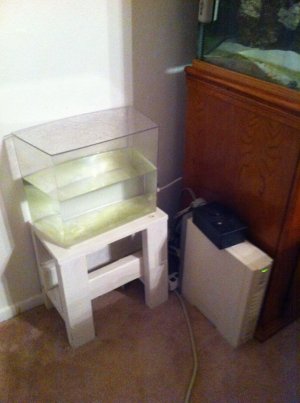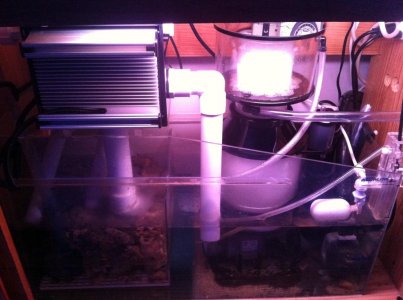For 10 years I used a DIY ATO that used two float switches. It activated a double power socket, so I could use whatever pump in my fresh water supply. And I used two pumps, so if one failed the other would still do the job. I'm not even that technically literate, I literally just followed an online tutorial back then. And during those 10 years it miraculously never failed. But I decided wise up and switch to something more safe after that...
All this has led me to trust old fashioned float switches 100x more then other types of sensors. If I was confident enough in my DIY builds then I would build a new ATO with 3 float switches, but I'm not. So long story short: One to keep the optimal level. A second one to prevent dry running. And a third one that prevents overflowing.
I would really want an ATO that just has 3 float switches. Does such a thing exist? (Or with other type of sensor, but 2 backup float switches.)
- I tried the Hydor smart control with 3 tiny sensors. Looked really promising. For some reason it didn't detect my waterlevel accurately. I've had return pumps running dry. And also the ATO pump going on for way to long.
- I tried one with an optical sensor from Autoaqua. The optical sensor also seems inaccurate. I've had return pumps running dry. And also the ATO pump going on for way to long. After a few months the optical sensor proved that it wasn't even water proof and the unit failed completely.
- I tried a very similar device from DD, with very similar results. Only difference was the sensor leak before I discarded it.
- Currently I'm on to Tunze, with an optical sensor and a second float switch that checks for the ATO being on too long. So it has a double check to prevent overflowing. This would have been great if it also had an extra float switch that checks for dry running. Because you guessed it, I've had return pumps running dry.
All this has led me to trust old fashioned float switches 100x more then other types of sensors. If I was confident enough in my DIY builds then I would build a new ATO with 3 float switches, but I'm not. So long story short: One to keep the optimal level. A second one to prevent dry running. And a third one that prevents overflowing.
I would really want an ATO that just has 3 float switches. Does such a thing exist? (Or with other type of sensor, but 2 backup float switches.)


